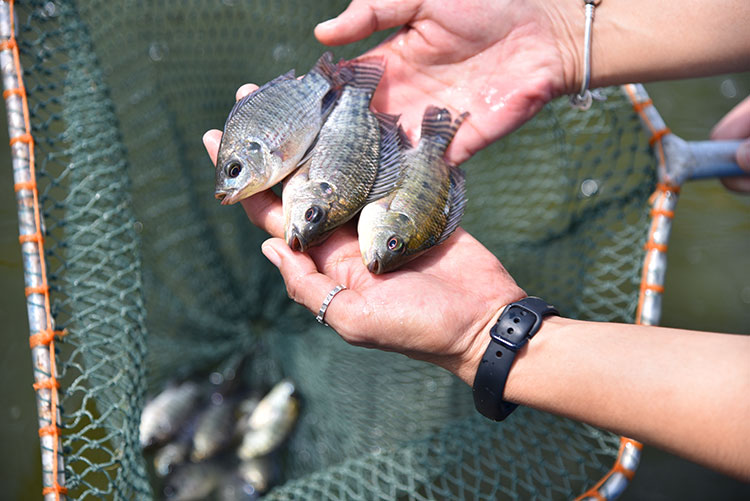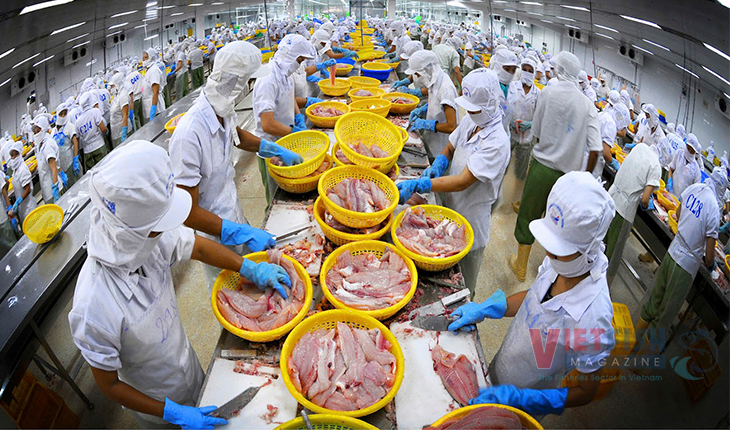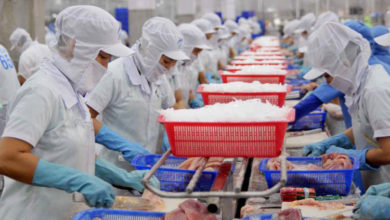Tilapia poised for billion-dollar export potential
Tilapia is facing favorable conditions and is expected to become the third pillar of Vietnam’s seafood exports, alongside shrimp and pangasius.
In the first three months of 2025, tilapia exports reached USD 14 million, a 131% increase compared to the same period last year, according to the Vietnam Association of Seafood Exporters and Producers (VASEP).

Though this figure remains a small fraction of the total seafood export turnover of nearly USD 2.3 billion in Q1/2025, VASEP believes tilapia exports could accelerate rapidly given the favorable conditions, potentially establishing it as one of the three mainstays of Vietnam’s seafood industry.
The global tilapia market was valued at around USD 10.6 billion in 2024 and is projected to grow strongly, reaching USD 14.5 billion by 2033. The United States remains the largest consumer market, importing nearly 180,000 tons of tilapia in 2024.
China is currently the world’s largest tilapia exporter and the primary supplier to the U.S. market. Since 2018, however, the U.S. has imposed a 25% tariff on Chinese tilapia, which has slowed growth but has not yet disrupted China’s strong foothold in the American market.
Nevertheless, with escalating trade tensions, Chinese tilapia exports to the U.S. are expected to decline, creating opportunities for competing countries, including Vietnam.
According to Nguyen Van Tien, Head of Global Aquaculture R&D at De Heus, orders for Vietnamese tilapia from American partners have recently surged, indicating a clear trend of U.S. buyers shifting from China to Vietnam and other alternative sources.
A long road ahead to elevate Vietnamese tilapia
Currently, Vietnam ranks fifth in Asia in tilapia production, after China, Indonesia, Bangladesh, and the Philippines. According to VASEP, Vietnam has several advantages that could enable it to quickly scale up tilapia production for export.
Vietnam is already a global leader in the farming and export of pangasius, a white-fleshed, freshwater catfish similar in characteristics to tilapia. However, while pangasius farming is mostly concentrated in southern Vietnam, tilapia is easier to raise and can be cultivated across all three regions of the country.
Mr. Tran Dinh Luan, Director General of the Department of Fisheries under the Ministry of Agriculture and Rural Development, noted that Vietnam’s fisheries development strategy through 2030, with a vision to 2045, has identified tilapia as a promising species for aquaculture and exploitation in reservoir areas.
That said, with tilapia exports reaching just over USD 41 million in 2024, there is still a long journey ahead before the species can become a major export commodity on par with shrimp, pangasius, and tuna.
Given the favorable outlook, Luan emphasized the need for early preparation, including joint ventures and partnerships to build a tilapia brand that can compete globally, drawing lessons from previous agricultural and seafood products.
Sharing the same view, Nguyen Hoai Nam, Deputy General Secretary of VASEP, stressed the importance of addressing current challenges in tilapia development, especially the reliance on imported fingerlings, which results in production costs about 30% higher than competitors.
Overcoming this issue requires significant investment in breeding research and the development of a closed-loop tilapia value chain. Simultaneously, feed supply and processing facilities must be secured to enhance the competitiveness of Vietnam’s tilapia sector.
VFM






